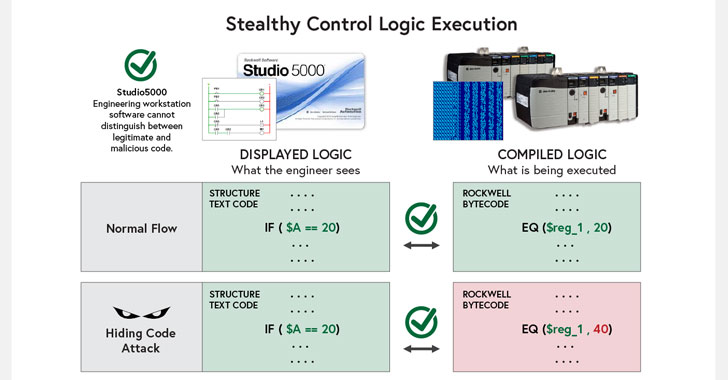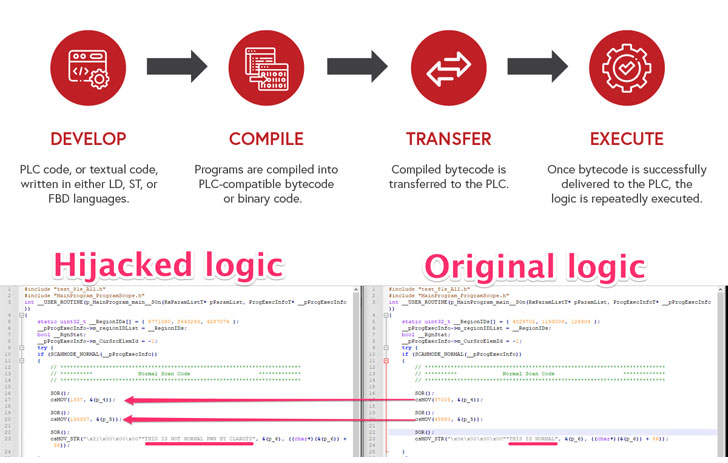Products You May Like
Two new security vulnerabilities have been disclosed in Rockwell Automation’s programmable logic controllers (PLCs) and engineering workstation software that could be exploited by an attacker to inject malicious code on affected systems and stealthily modify automation processes.
The flaws have the potential to disrupt industrial operations and cause physical damage to factories in a manner similar to that of Stuxnet and the Rogue7 attacks, operational technology security company Claroty said.
“Programmable logic and predefined variables drive these [automation] processes, and changes to either will alter normal operation of the PLC and the process it manages,” Claroty’s Sharon Brizinov noted in a write-up published Thursday.
The list of two flaws is below –
- CVE-2022-1161 (CVSS score: 10.0) – A remotely exploitable flaw that allows a malicious actor to write user-readable “textual” program code to a separate memory location from the executed compiled code (aka bytecode). The issue resides in PLC firmware running on Rockwell’s ControlLogix, CompactLogix, and GuardLogix control systems.
- CVE-2022-1159 (CVSS score: 7.7) – An attacker with administrative access to a workstation running Studio 5000 Logix Designer application can intercept the compilation process and inject code into the user program without the user’s knowledge.
Successful exploitation of the defects could allow an attacker to modify user programs and download malicious code to the controller, effectively altering the PLC’s normal operation and allowing rogue commands to be sent to the physical devices controlled by the industrial system.
“The end result of exploiting both vulnerabilities is the same: The engineer believes that benign code is running on the PLC; meanwhile, completely different and potentially malicious code is being executed on the PLC,” Brizinov explained.
The severity of the flaws has also prompted an advisory from the U.S. Cybersecurity and Infrastructure Security Agency (CISA) that outlines mitigation steps users of the affected hardware and software can take for a “comprehensive defense-in-depth strategy.”



